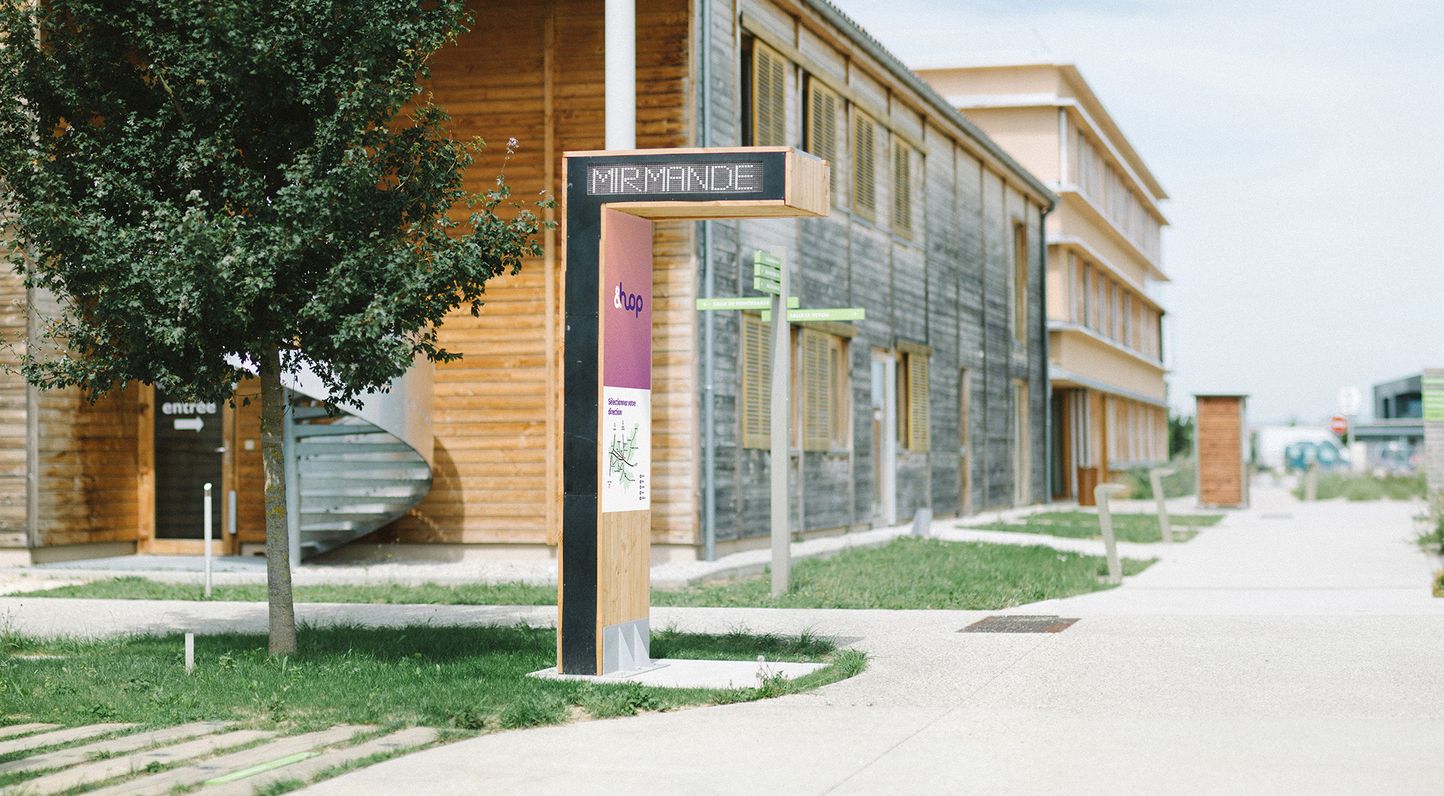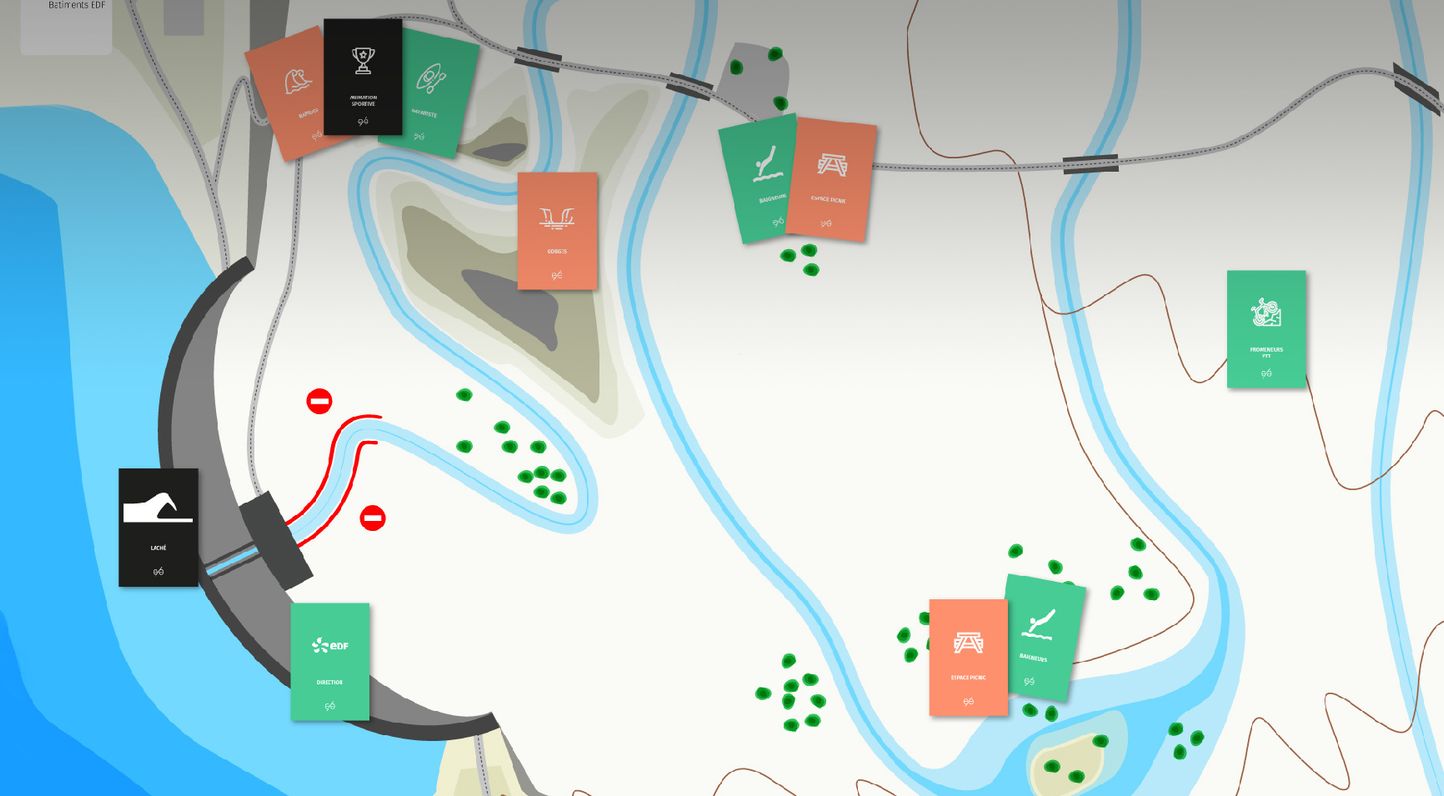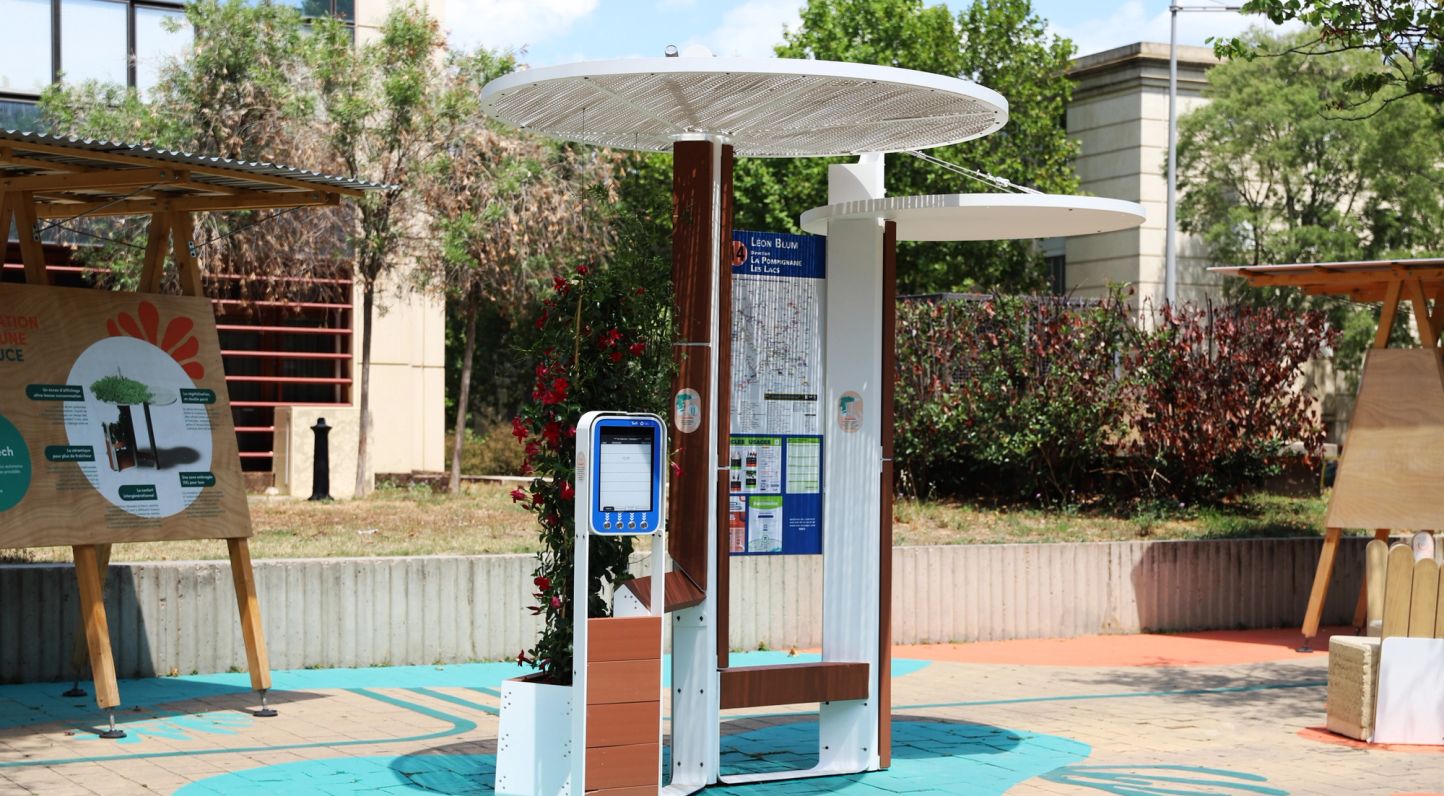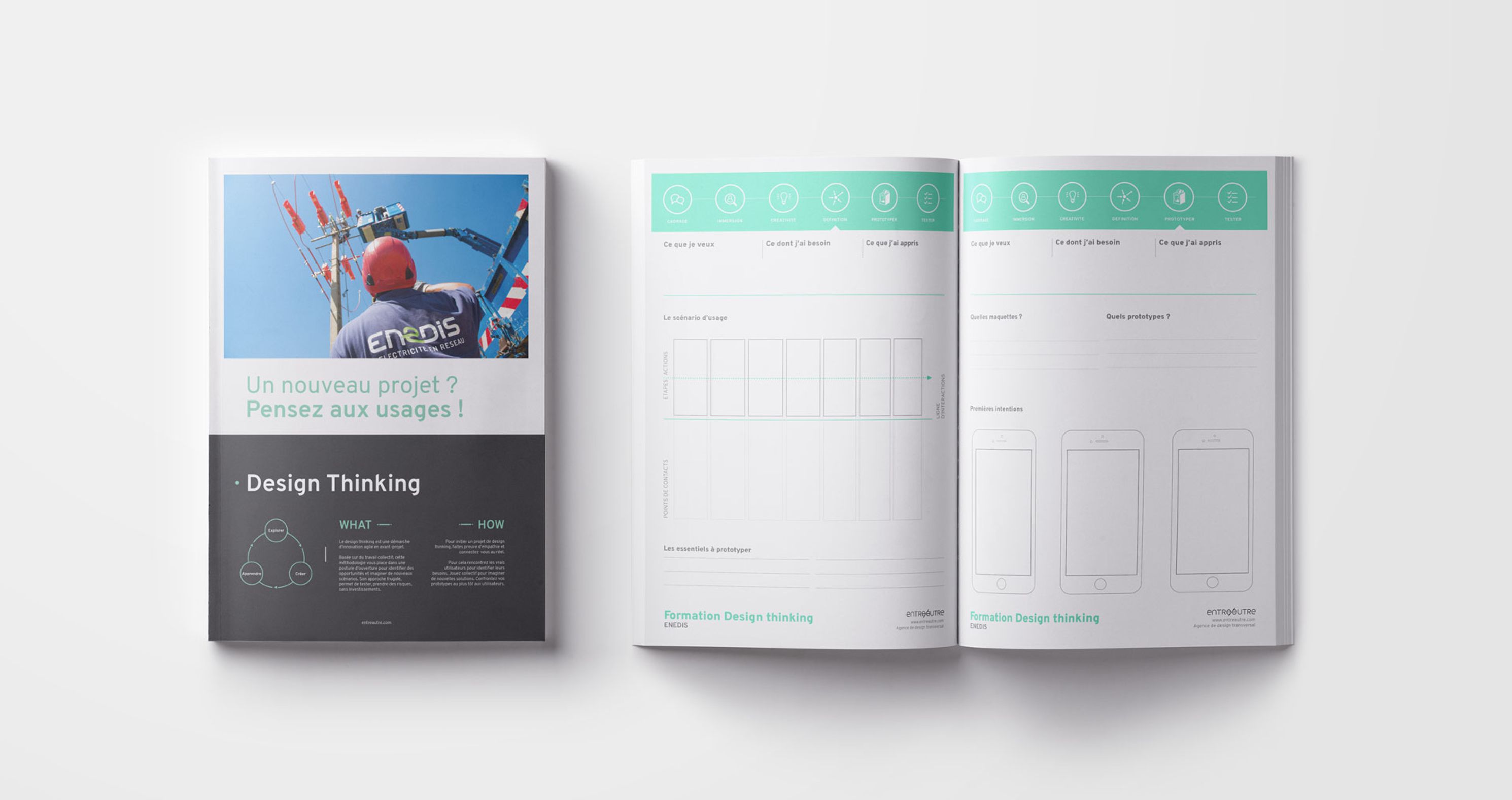
Spreading a New Culture of Innovation
01.Brief
ENEDIS, a public service company, strengthens its capacity to innovate through the creation of three experimental laboratories: the FASTLABs. They centralize and accelerate innovation. They also aim to transform local initiatives into solutions of national scope.The agency was contacted to share its expertise in design thinking and energize projects through the Design Sprint.
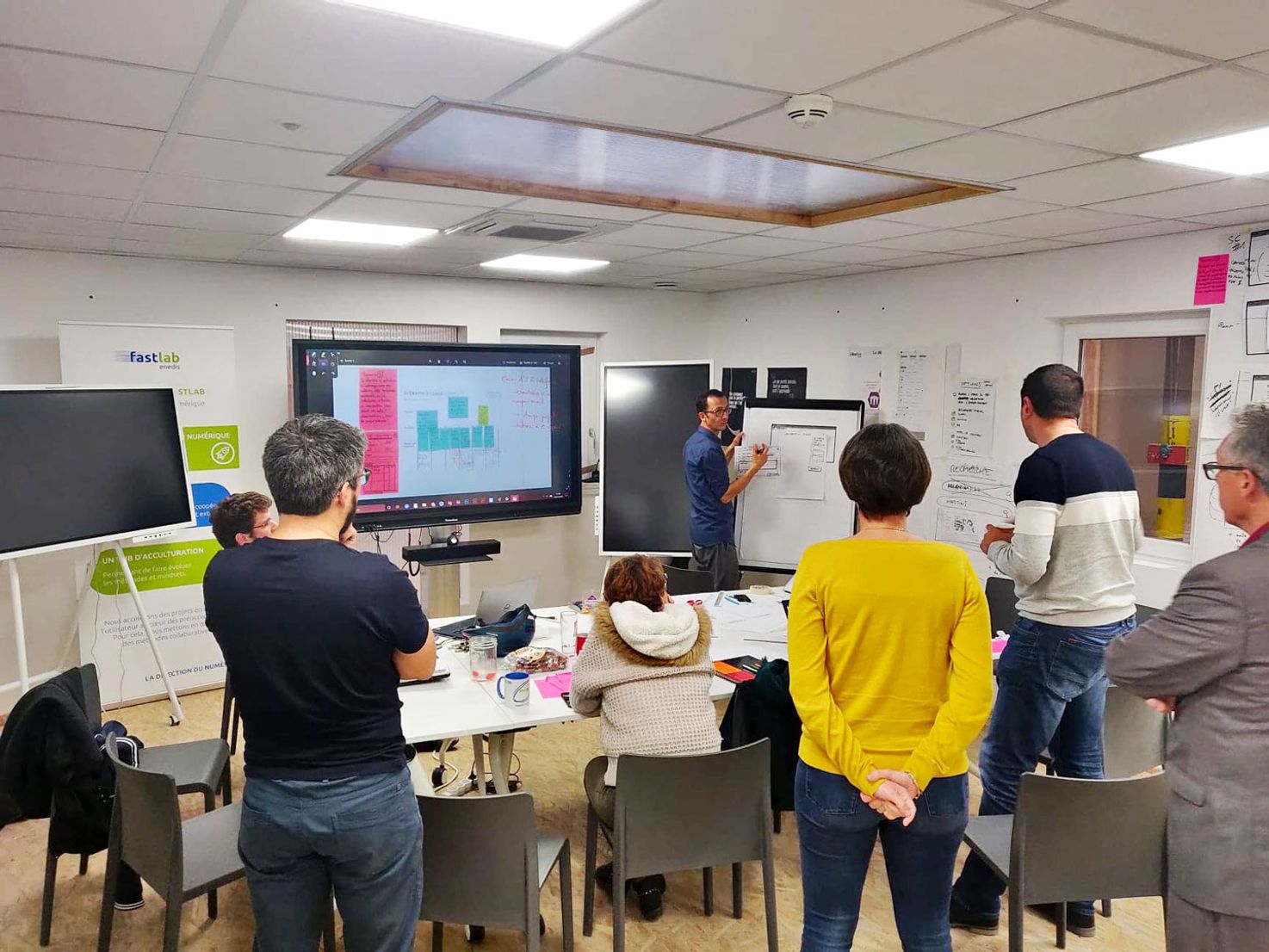
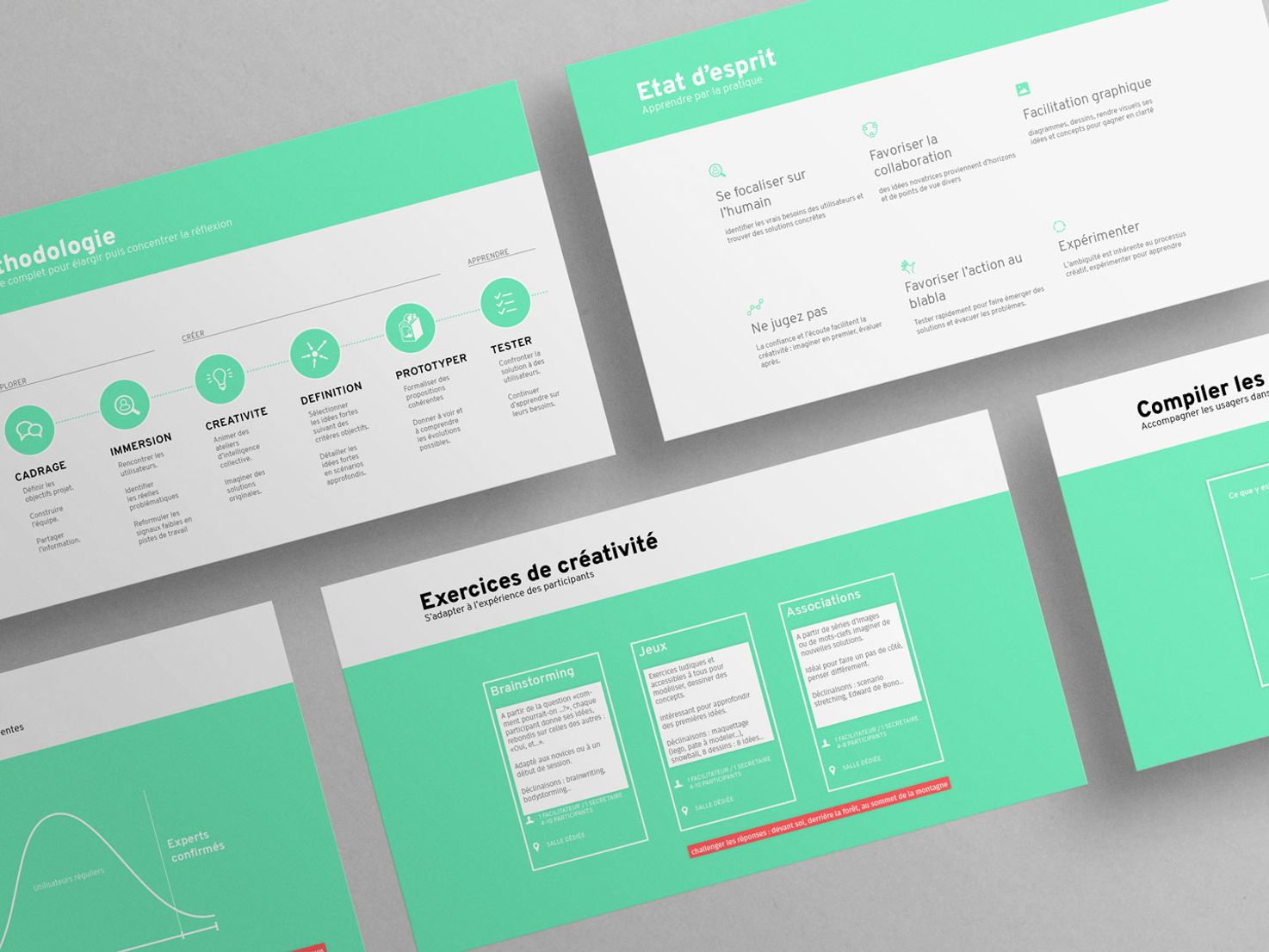
02.Facilitating and Accelerating Innovation Through Design Tools
The FASTLABs support a variety of projects: themes, project maturity, deployed resources, etc. We have thus envisioned a flexible and responsive collaboration. Three main axes will structure this collaboration: action-training sessions to understand design tools, Design Sprints that enable a rapid transition from idea to prototype, and tailored follow-up to maintain momentum.
Training Through Action
Practice helps to better understand the concepts and methods addressed. To make the value of design intervention in the heart of projects tangible, we propose to teams — in an action-training format — to study their own actions and experiences.
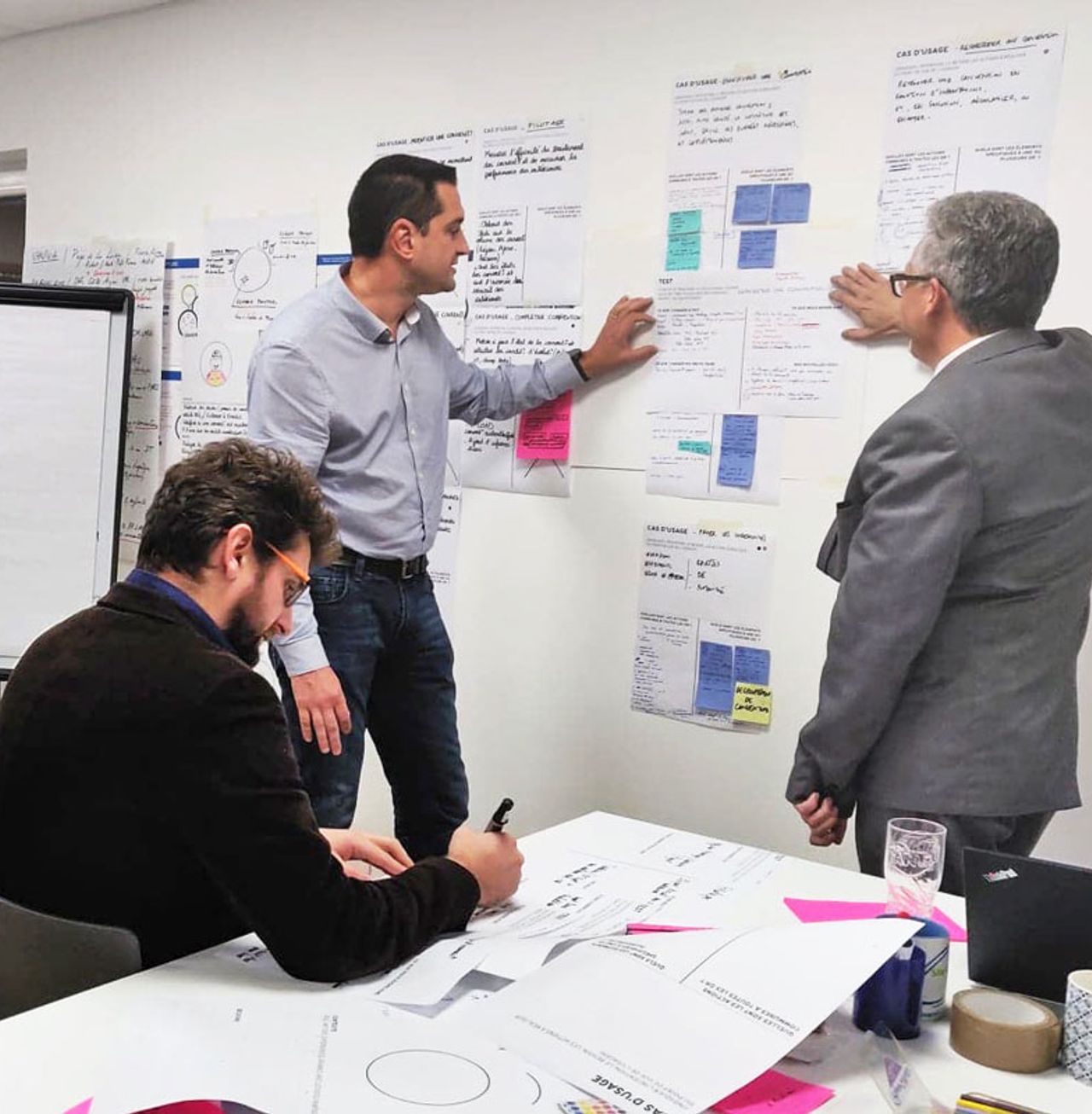
2 Focus :
- Design thinking
- User experience
At the end of this training, participants retain a playbook. This action framework is a practical tool that also helps disseminate design thinking within their department. These sessions also provide an opportunity for agents to immerse themselves in the FASTLABs to grasp their value and evolve their intentions.
03.Facilitating Design Sprints
To give concrete dynamics to the initiatives supported by the FASTLAB, stimulate creativity, and foster collective intelligence, we organize Design Sprints. During a short period (2 days), a team composed of three Regional Directorates works with the agency's designers on a specific topic: the e-convention. The sprint unfolds in four stages:
- Sharing current processes applied in the different Regional Directorates.
- Analyzing existing digital solutions.
- Identifying users and use cases.
- Researching scenarios based on use cases (paper prototyping, etc.).
At the end of the session, six scenarios were imagined. They aim to simplify and standardize the management of conventions.Using the Design Sprint enhances the collaborative capacity of teams. The support in consolidating ideas extracts and solidifies a shared vision to initiate suitable solutions.
04..A Prototype and Tests for Dissemination
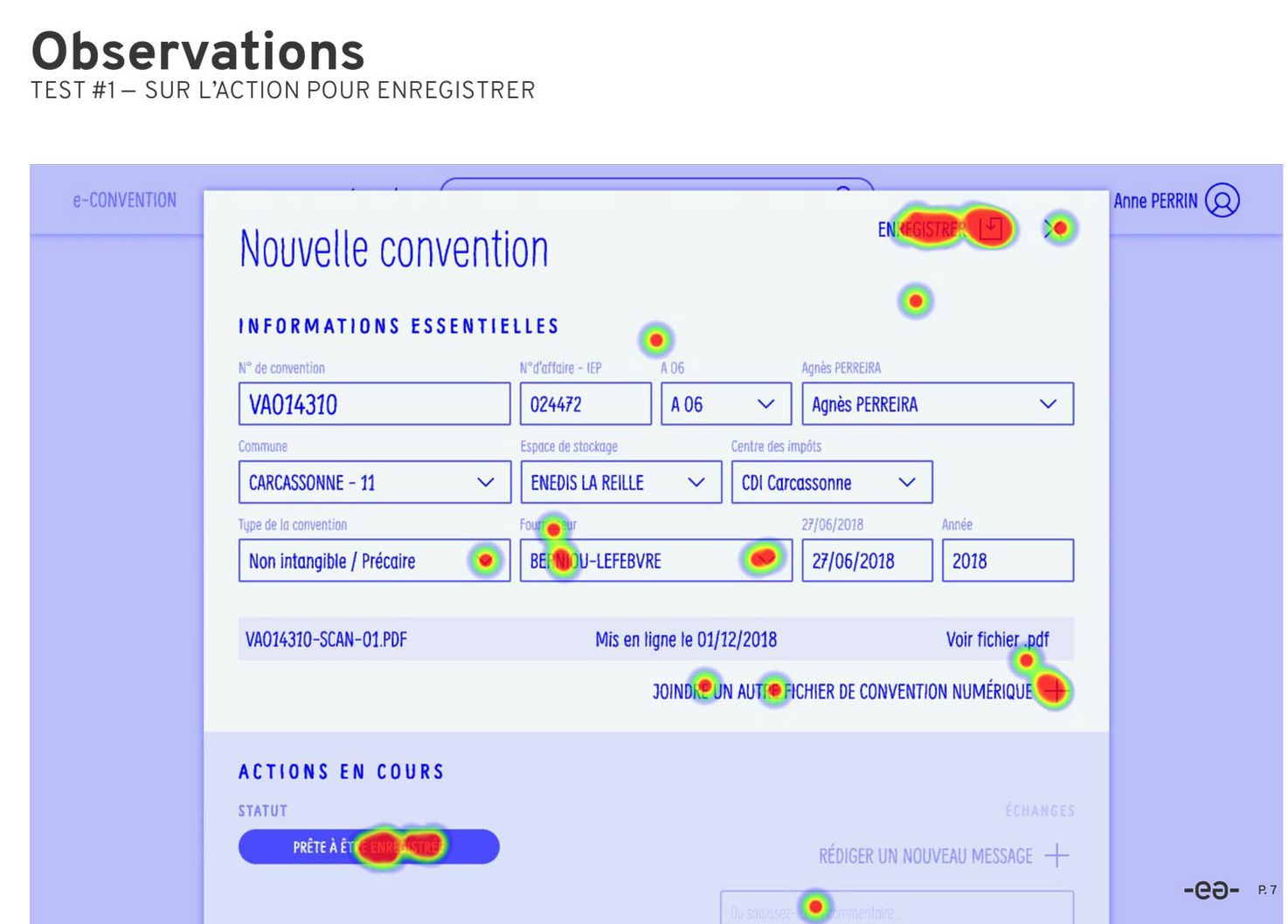
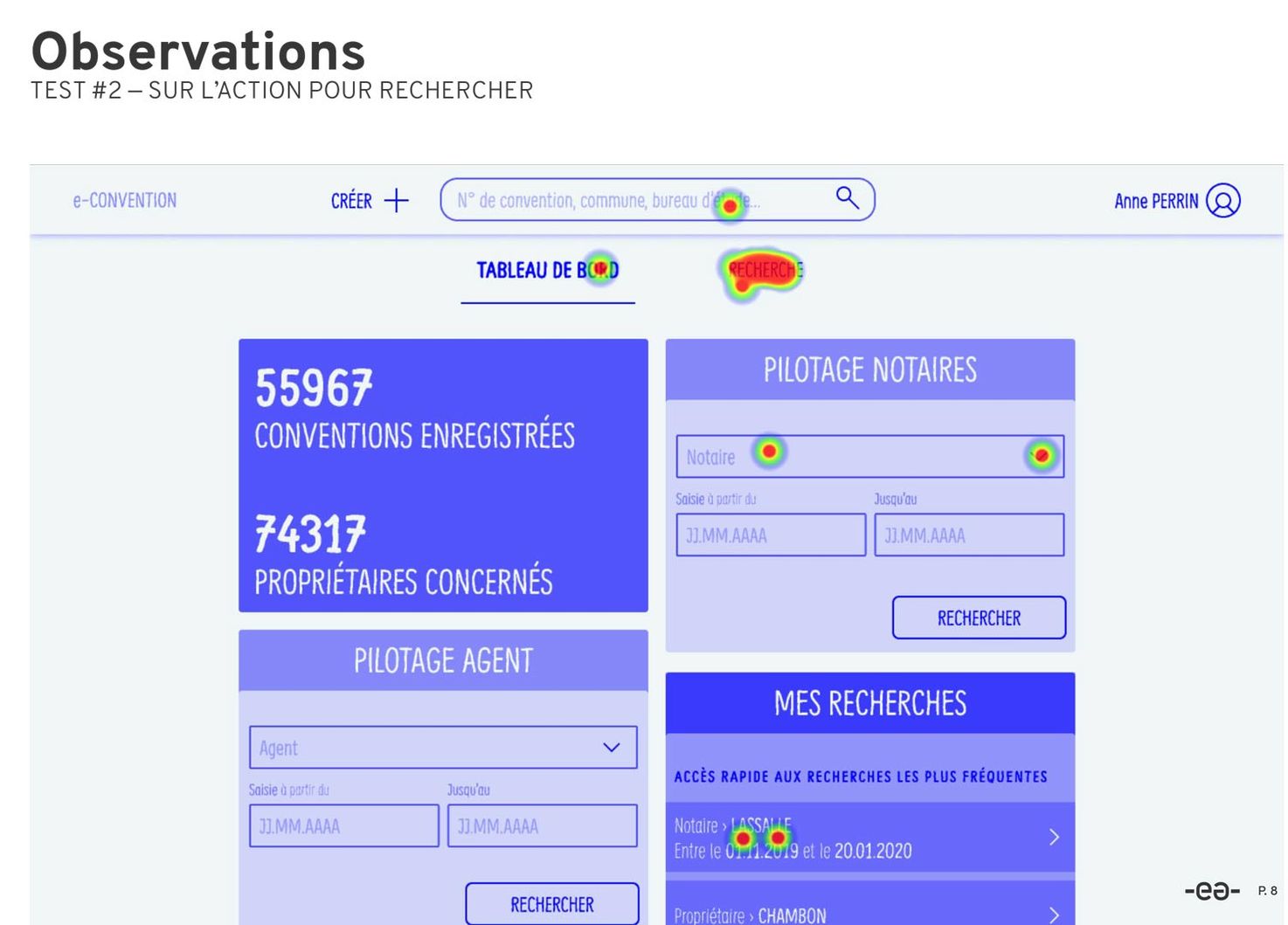
To test the scenarios, paper prototypes are transformed into a functional prototype. This phase allows for testing and refining the user experience in detail, turning broad principles into precise functionalities.This functional prototype is quickly disseminated to compile user feedback. The collected observations allow for optimizing functionalities and user experience. This step also helps maintain the project’s momentum.
05.Stimulating Projects
These initial collaborations raise questions about the continuity of a project.How can we transition from one-off support to a regular dynamic? We have developed a more comprehensive operating mode to support projects at each stage and trigger appropriate actions based on needs.We address this request with a combo: training, consulting, and operational actions to quickly create quality deliverables.
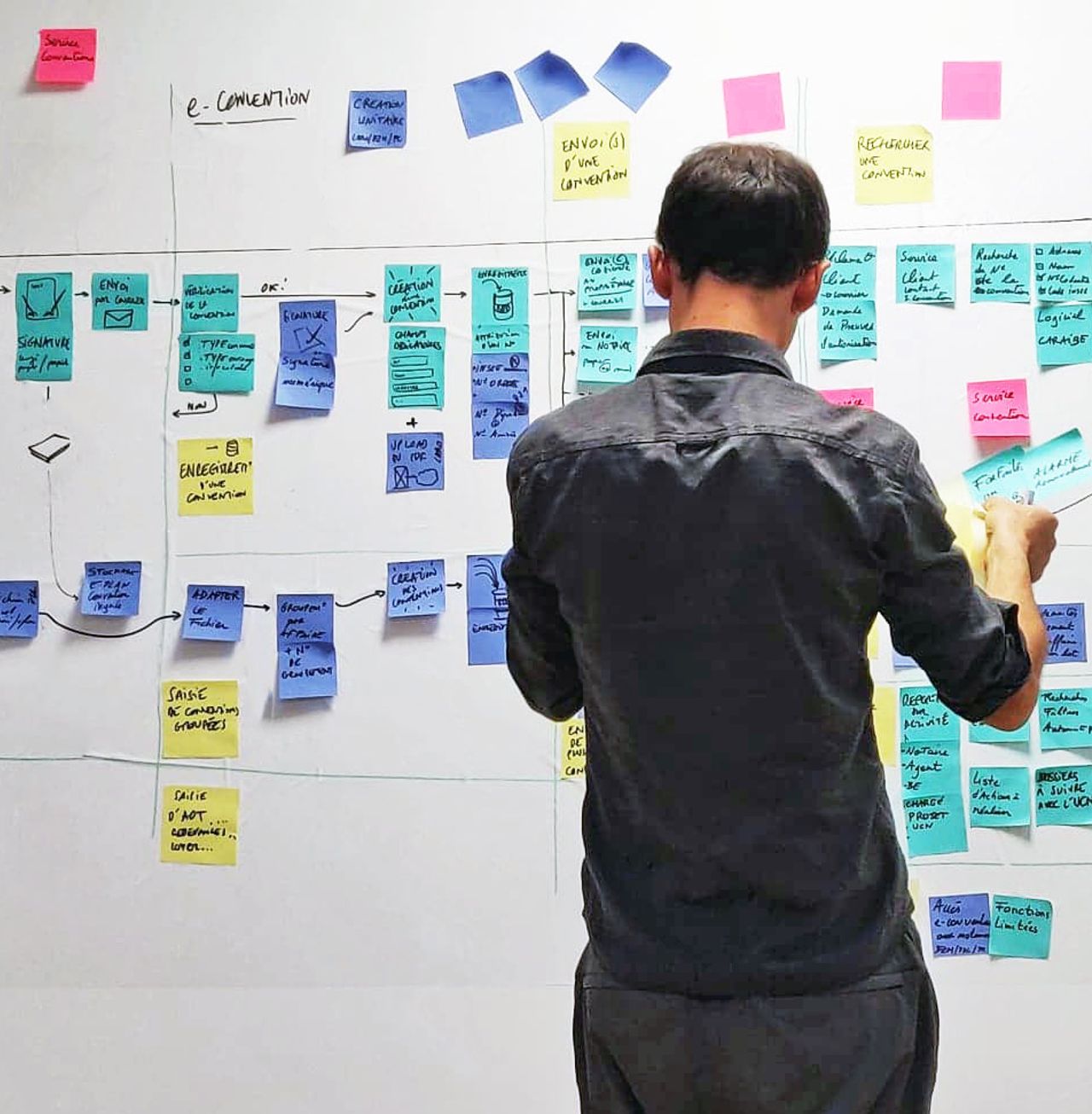
- Action Training
- Usage Analysis
- Creativity Workshop
- Design Advisory
- Prototyping
Result
Positive impact
Accelerated projects and improved user experiences.
Simplicity
Measured and flexible support to accurately respond to the challenges of project leaders.
